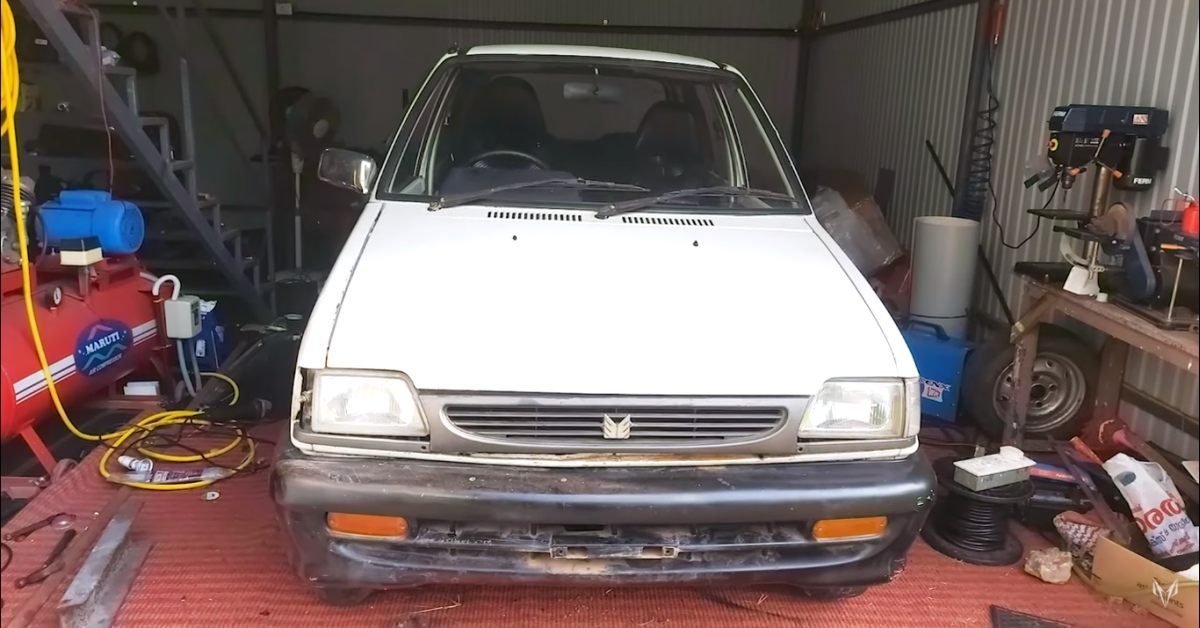The Maruti 800 is one of the most iconic cars in Indian automotive history. It was among the most affordable cars in the country. Maruti began production of the 800 in 1983 and discontinued this hatchback in 2014. Even today, many owners continue to use and maintain their Maruti 800 cars quite well. Cars like these are often chosen for projects and modifications as well. Numerous modification videos featuring such cars have been seen in the past. In this context, we have a video showcasing the transformation of an old Maruti 800 hatchback into a rear-wheel-drive (RWD) electric car.
The video has been uploaded by Viptronix India on their YouTube channel. In this video, the vlogger, who is also the individual responsible for the car’s modifications, discusses the changes made to the vehicle. Right at the beginning of the video, he mentions that he ordered an EV conversion kit and managed to install it into the 800 within three days. The vlogger undertook this conversion at the request of the car owner. Due to time constraints, the work couldn’t be executed with impeccable precision, a fact that is evident in the video.
Also read: 10 DC Design cars & how they look in the REAL world: Maruti Swift to Mahindra XUV500
The presentation starts with an overview of the battery pack in this Maruti 800 EV. The battery pack is situated under the bonnet, with the engine and other components having been removed from the engine bay. The car now features a compact battery pack, as per the customer’s preference. There is still ample space in the engine bay that can be utilized to install additional batteries for an improved and extended driving range. The battery pack has been positioned on a crossbar that spans the width of the car. This customization was devised to ensure the safe placement of the batteries.
![India’s first rear-wheel driven Maruti 800 hatchback is an electric car [Video]](https://www.cartoq.com/wp-content/uploads/2023/08/maruti-800-electric-1.jpg)
The vlogger explains that the owner opted for a smaller battery pack due to budget constraints, resulting in the compact size. The engine bay is now completely empty, with the wiring meticulously organized beneath. The air conditioning unit has also been eliminated from the car. The motor has been placed on the rear axle, transforming the car into India’s first rear-wheel-drive 800 hatchback. To balance the weight distribution, the batteries have been positioned at the front. The controller has been located in the trunk, while inside the cabin, a separate key—distinct from the ignition key—is employed to start the motor. All the car’s usual electrical components, such as the headlights and wipers, are functioning normally.
The factory accelerator pedal has been swapped out for a unit provided by the conversion kit. A switch facilitates control over forward and reverse movement, and the gear lever incorporates settings for three levels of acceleration—1, 2, and 3. The video demonstrates the car in motion. While there are numerous workshops that undertake such conversions, it’s important to note that such modifications are often not recommended. In many cases, these conversions are not approved by the Regional Transport Office (RTO) and can be deemed illegal. Issues may arise with regards to the quality of the wiring, batteries, and motor in such conversion projects. Additionally, the modifications carried out on this particular car lack a certain level of cleanliness and precision. A handful of workshops in India do offer RTO-approved conversion kits. For individuals interested in converting their cars into electric vehicles, approaching such establishments is advisable for achieving superior results.
Also read: Upcoming 2022 Maruti Suzuki Vitara Brezza rendered






![Youth rides on the bonnet of a moving Maruti Swift: Cops issue Rs 26,000 fine [Video]](https://www.cartoq.com/wp-content/uploads/2023/08/swift-stunt-featured-253x131.jpg)
![Upcoming all-new Maruti Swift spotted on Indian roads before official launch [Video]](https://www.cartoq.com/wp-content/uploads/2023/11/2024-all-new-maruti-swift-spied-indian-roads-253x131.jpg)

![Volvo V60 Buried In Landslide, Still Remains Driveable [Video]](https://www.cartoq.com/wp-content/uploads/2024/07/volvo-v60-driveable-even-after-landslide-253x131.jpg)
![Maruti Suzuki Jimny Transformed With A Mercedes Benz G-Wagen Kit [Video]](https://www.cartoq.com/wp-content/uploads/2024/07/maruti-jimny-with-g-wagen-kit-253x131.jpg)